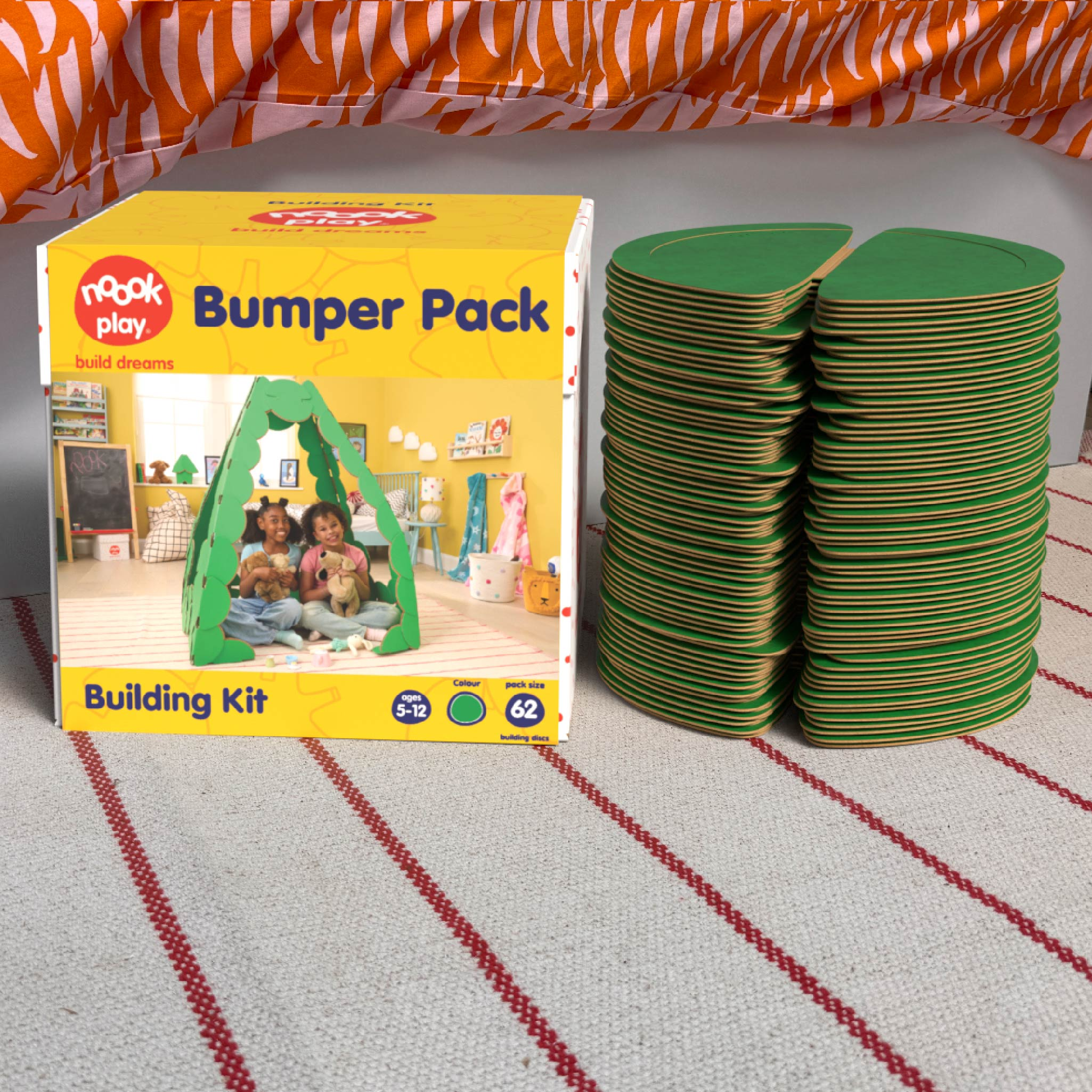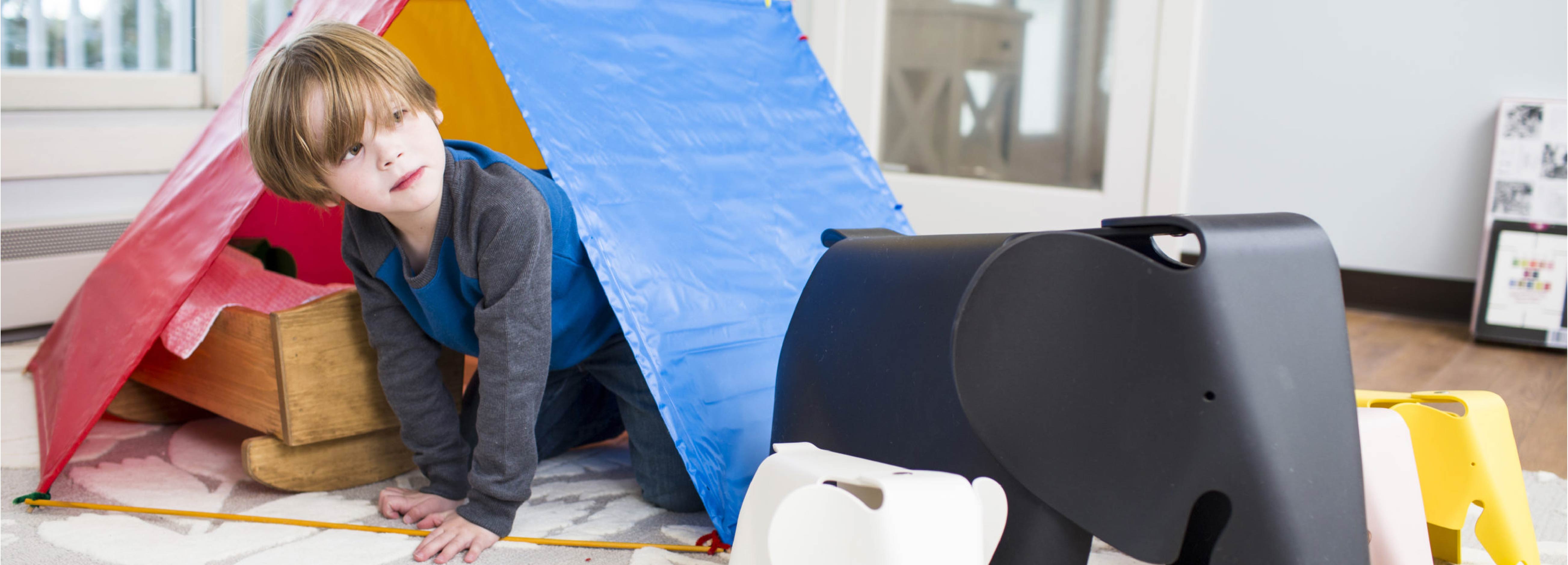
Design - the Third Teacher: how kids benefit from the environment around them.
A core belief behind noook play®, is that design genuinely matters. It doesn't just make things a bit more beautiful, it literally has the power to shape the world around us. And more importantly, it has the power to shapes us too.
At noook play®, we believe that design, particularly toys, are the Third Teacher. An active influence, that helps shapes who we become.
To explain this idea, we need to tell you a bit about Loris Malaguzzi (1920-1994). The pioneering Italian teacher and psychologist who developed & founded the Reggio Emilia approach to learning. A philosophy of teaching which believes that kids develop through interactions. Interactions with people as well as things. And importantly, the Reggio Emilia approach breaks these interactions down into three key "teachers":
- Teacher number one - the interactions that kids have with adults, parents and teachers;
- Teacher number two - the interactions that kids have with their peers, friends and classmates; and
- Teacher number three - their environment, basically everything around them.
Environment, said Malaguzzi, is the Third Teacher.

This is a worthwhile thing to note because we tend to overlook this fact too often. Generally, we think of our physical environment as being relatively inconsequential when it comes to education. Most teaching theories focus on a particular method of learning, or the interaction students have with teachers. And while these things are critical, this type of thinking also allows us to miss the importance of all the little details.
Because of this, Reggio Emilia schools pay very careful attention to the design of their classrooms. Making sure that they have the basics in place, like kid-sized desks and chairs so that students are sitting comfortably. Making their classrooms feel like your living room at home so that kids and teachers feel relaxed and at 'home'. They even set up the school to provide a variety of learning environments so that students can pick which one fits them best at that moment. It's an approach that acknowledged design matters, asks itself: "how do kids learn?" And then creates the environment suitable for fostering that.
It's a far cry from what a 'conventional school' looks like. Row upon row of chairs all facing the same black board (or now projector screen). Endless corridors of lockers and suspended ceilings. Places where any cultural thought of the physical environment has been disregarded. Or even worse, consciously engineered to be a kind of perfectly sterile factory for the making of future adults. Schools more often represent office environments instead of inspiring learning and exploration of the world.
Although Malaguzzi was careful to put his 'teachers' in a hierarchy, and his Third Teacher at the bottom, we think a special exception could easily be made when it comes to toys. Maria Montessori famously said that "play is the work of children". And given the importance that the Third Teacher places upon the physical environment, we could well imagine Malaguzzi continuing "and toys are tools for this".
While design is often just creating an environment in which learning can happen optimally. Comfy seats, a welcoming environment, an opportunity for choice. Basically acting passively. 'Good toys' are a little bit different. 'Good toys' are almost always actively fostering play. Actively fostering learning. Even if it's just a cardboard box. That play is only happening because of that card box. And in this scenario, it's not just any cardboard box, its a powerful tool for play. In this scenario, it's the Third Teacher. If not the Second or even the First.
In this light, the design of toys is really quite important. Kids learn through play and toys are tools for that. It genuinely matters which toys you give your kids. It can't just be any old thing.
At noook play®, we think most of us have an intuition for this. We're all familiar with the cliché of the architect who played with Lego, or the musician who used to bang out childish beats on the cooking pans. It wasn't just their innate interests showing signs early on, although we're sure it is this too. These experiences of play are formative and these stories are cliché for a reason. They are commonplace and they are true.
Our physical environment has a causal influence on us, and the experiences this allows or hinders helps shape us. In short, design really is the Third Teacher.
If you want to learn more about The Third Teacher we recommend this book: The Third Teacher, 79 Ways You Can Use Design to Transform Teaching & Learning. A great book that explains the Reggio Emilia approach and is full of practical suggestions of how you might design the Third Teacher.
Keen to bring the right kind of play into your home? Shop our range of building toys now.



Leave a comment
This site is protected by hCaptcha and the hCaptcha Privacy Policy and Terms of Service apply.